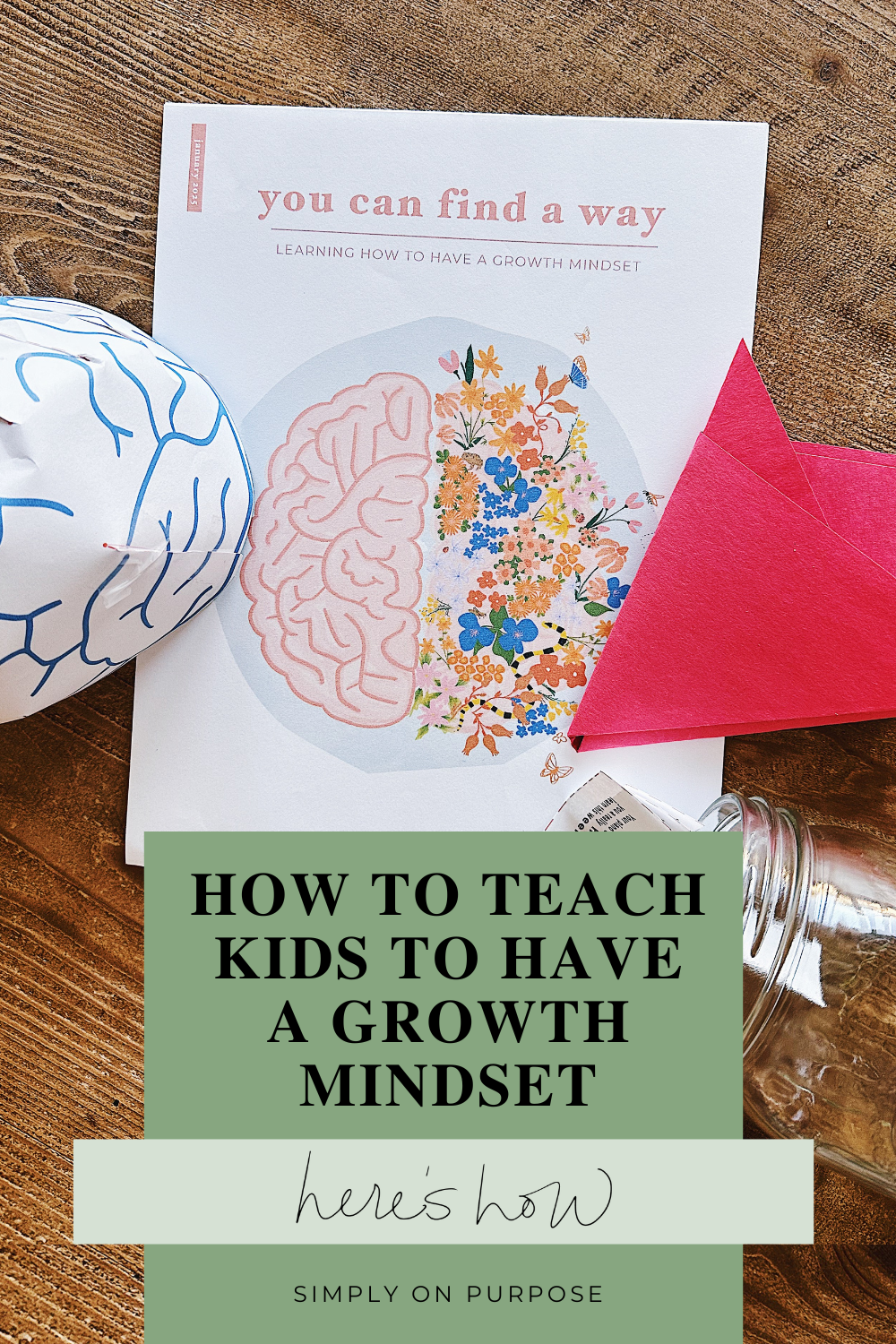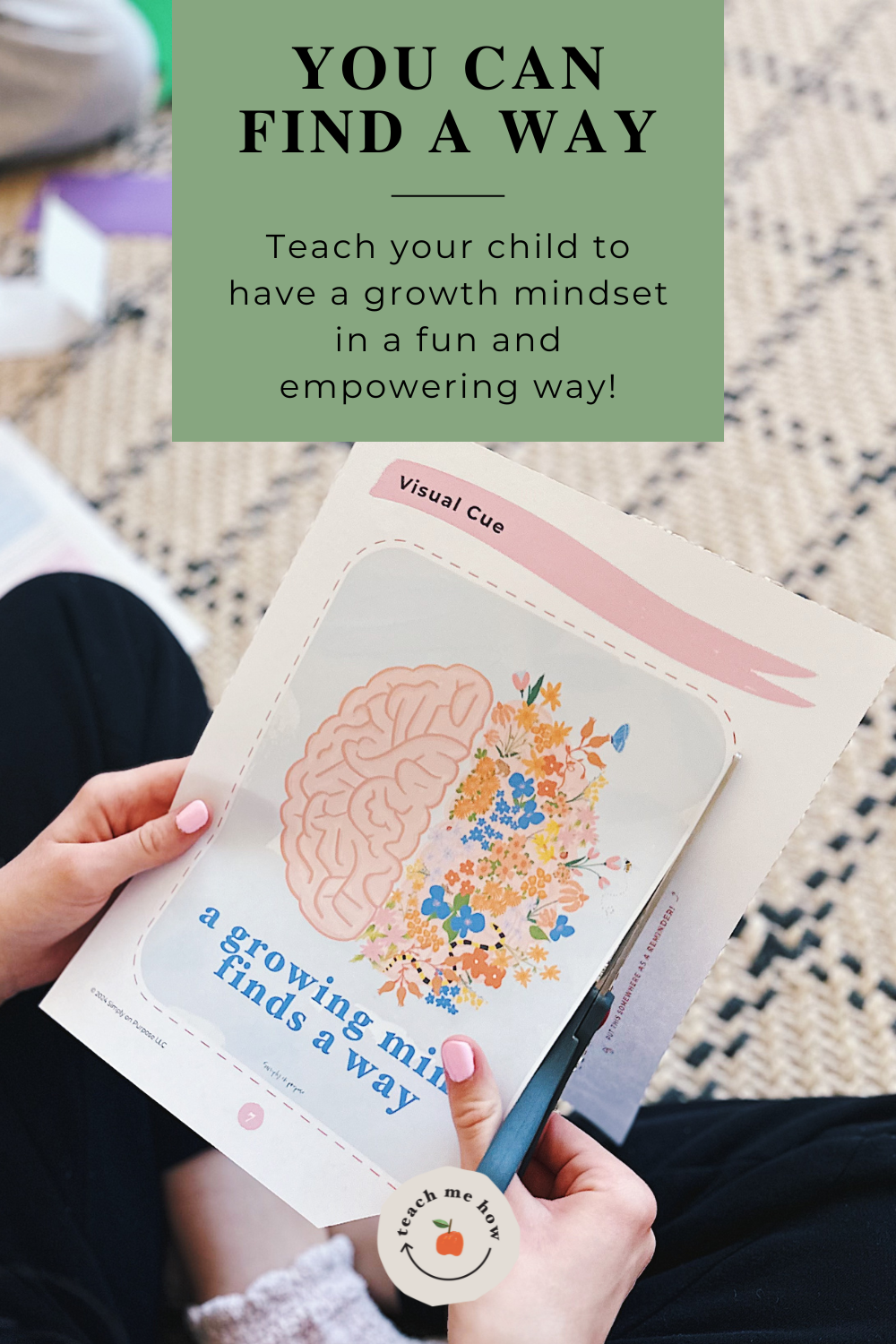It’s a new year, and we want our kids to embrace challenges, learn from mistakes, and believe in their ability to grow. Teaching them to have a growth mindset can help them develop these skills and build resilience that will serve them for a lifetime. But how do we guide them toward this way of thinking? Here are some simple strategies to get started.
What Is a Growth Mindset?
A growth mindset is believing in your ability to grow, specially when growth involves mistakes and trying new things. It’s the opposite of a fixed mindset, which assumes that talents and abilities are unchangeable. When kids understand that they can grow, they’re more likely to embrace challenges and keep trying, even when things get tough.
How to Teach and Practice Growth Mindset in Your Home
If you’re looking for the perfect tool to teach your child what growth mindset sounds like and feels like, print out my Teach Me How resource, “You Can Find a Way: Learning How to Have a Growth Mindset.” This printable includes:
- A lesson on “Finding a way.” With an object lesson, it shows kiddos that there is always a way to figure something out!
- Discussion questions to get children thinking about how a growth mindset can help them overcome hard things.
- Role plays with a dozen common scenarios where your child can practice having a growth mindset.
- A visual cue for you to put up in your home to remind everyone what they’re learning!
- An activity where you get to create your own “Thinking Hat,” to help kiddos become more aware of the way they talk to themselves inside their heads.
- Tips for grown-ups, extensions ideas for more learning, and more!
More Ways to Encourage a Growth Mindset
1. Praise the Process, Not the Outcome
When your child succeeds, focus on the effort they put in rather than just the result. Instead of saying, “You’re so smart,” try saying, “I’m proud of how hard you worked on that project.” This helps them see the value of effort and persistence. Celebrate their attempts, even when things don’t go perfectly. Let them know it’s okay to make mistakes because that’s how we learn!
2. Model a Growth Mindset Yourself
Kids learn by watching us. When you face challenges, talk about how you’re working through them. Share your own mistakes and what you learned from them. For instance, if you’re trying to learn a new skill, like cooking a new recipe or fixing something around the house, narrate your process and emphasize your progress.
3. Teach Them to Embrace Challenges
Help your child see challenges as opportunities to grow. When they’re hesitant to try something new or difficult, remind them that it’s okay to struggle at first. Use phrases like, “Every expert was once a beginner,” or, “This is how you get stronger—by trying hard things.”
4. Reframe Negative Thoughts
If your child gets frustrated and says, “I can’t do this,” encourage them to add the word “yet” at the end: “I can’t do this… yet.” This simple addition shifts their thinking and reminds them that improvement is possible.
5. Encourage Problem-Solving
When your child encounters a setback, resist the urge to fix it for them right away. Instead, ask questions like, “What could you try next?” or “What did you learn from this mistake?” This helps them develop the confidence to tackle problems independently.
Let’s make 2025 the year your child discovers their potential and learns to say, “I can find a way!”
If you would like more resources to teach your children life skills, you might enjoy these printables:


